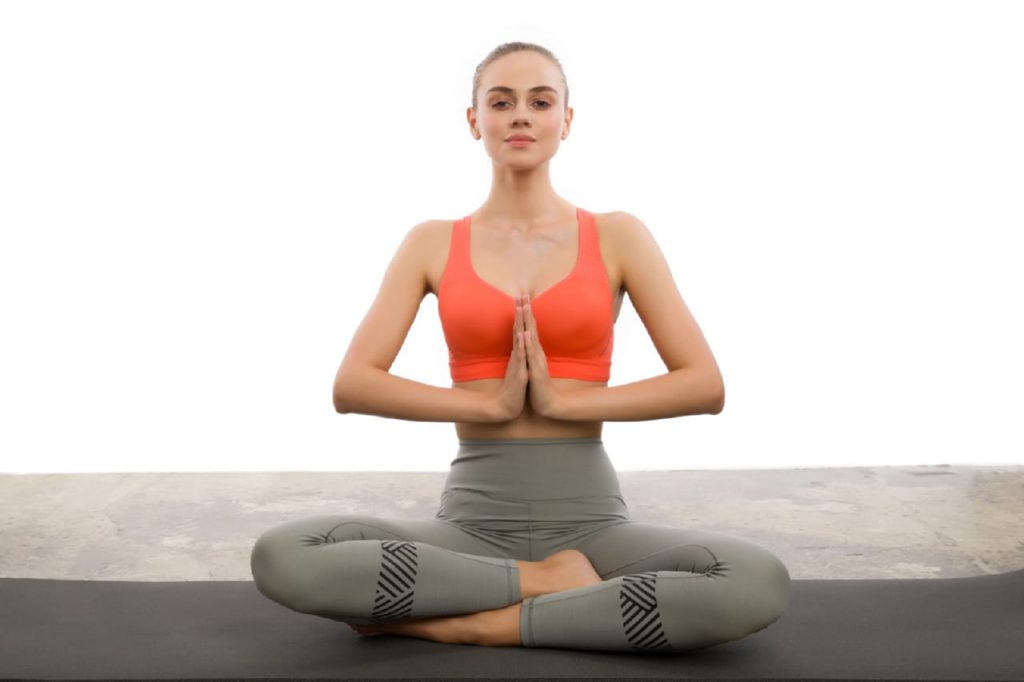This article will introduce you to different styles of meditation. I suggest that you bookmark this page and take your time to try each style to see which type of meditation is right for you. Take some time to thoughtfully explore how different meditation practices affect you. Then you can choose any practice depending on your current needs.
I have chosen the most traditional meditations from the most popular spiritual practices. All of these meditations are not related to religion or mysticism. They can be practiced in a secular way.
How to choose the best kind of meditation
There is only one way to choose the right kind of meditation – try different techniques in practice, and choose based on the experience.
There’s no way to say that any one way of meditating is better or worse. Everyone is different: different temperament, different character, different goals. Also, for the same person, at different moments of time, the soul may lie for different ways of practice. Today you want to move and be aware of yourself in motion, and tomorrow you want to sit still as a rock and look deep into yourself.
Different practices may use different objects for observation: sounds, sensations in the body, visual images, feelings in the heart, breath, thoughts. But the essence of all practices is the same: mindful attention, concentration, and relaxation.
All of these types of meditation have the same positive effect on the practitioner in reducing stress and anxiety. But also this chapter indicates its own benefits for each individual way of meditating.
Zen
Zen is a sitting meditation. Zen is practiced in as still a sitting posture as possible with a straight back. Posture in this practice is important and is the basis for being in the right state of mind.
This meditation is based on the idea that everyone already has perfect consciousness. Perfect consciousness strives for nothing, desires nothing, and does not move toward any goal, because it is already perfect. Therefore, nothing can be done to achieve such a state of consciousness. You just have to sit there and be it.
Zen is not a practice, an action, or a movement toward a goal. You could say that it is something that is the opposite of these concepts. But it’s impossible to put it into words, you know.
- Sit with your back straight, not leaning on anything. Sit in the lotus pose, the Turkish pose or the lap pose. Fold your hands into the Dhyana mudra. Your ears should be over your shoulders and your nose over your navel (in one vertical line).
- Place the tip of your tongue on your upper palate. Eyes half-closed and look fixedly at a point on the floor one meter away (alternatively on the wall in front of you).
- Let go of consciousness and just abide in whatever is going on.
- This meditation has no goal: no goal to stop the internal dialogue, no goal to make you feel better, no goal at all. Your goal of “being” has already been achieved, and Zen, as perfect abiding, is the result of that achievement.
- When you are ready to finish the meditation, slowly move, stretch, and return to your everyday problems.
Vipassana
There is nothing complicated about this meditation, in fact, the essence of Vipassana is very simple. Practicing Vipassana means observing and being aware of what is happening in the present moment.
When practicing the Vipassana technique, you just sit comfortably and breathe normally for a few minutes, without any additional effort. Then you focus your attention on the back and forth movements of your abdomen as you breathe. That’s all that’s in your attention. Nothing else is happening in the present moment. Your thoughts should be completely focused on the rise and fall of your belly, as if you were repeating the mantra “inhooh – outhale” to yourself.
When the mind wanders, which it certainly will, you call to yourself the object to which the mind is distracted by a simple word. For example, if you are distracted by a sound, you designate to yourself: “sound.” If the thought has gone into the past or the future, you mark to yourself: “remembering” or “planning. The idea is not to punish yourself for this distraction, but simply to become aware of it and return to watching your belly rise and fall.
You can practice Vipassana on your own, for example, for an hour a day. But such awareness is desirable to bring to all your actions during the day, as is done in a teaching ten-day retreat. Be aware and label each action. “Opening the door,” “Washing the dishes” – attention is always present.
The point of the technique is to be fully present in everything you do. We are often distracted and so disconnected from the present moment that we don’t see things as they really are.
For example, we tend to see washing dishes as an annoying household task. Thus, we put a negative label on dirty dishes and become annoyed in doing so. Instead, Vipassana meditation encourages us to think that this task is neither bad nor good, it is just “washing dishes.”
No things or events are essentially bad or good. Only our thoughts about them make them bad or good for us. By becoming aware of these thoughts, you can change your mood and attitude toward happiness and contentment.
- Sit comfortably. It’s best to sit with your back straight, not leaning on anything. Take three deep breaths and exhales. Relax your body and release the tension with each exhalation.
- Direct your attention to the sensations in your body, especially the movement of your abdomen as you breathe. Be aware of each movement with full attention. After a while, shift your breath to the sensation of air moving through your nostrils. If you find yourself distracted from observing the breath, note that fact to yourself and gently return your attention to the breath.
- Scan your body with your inner gaze and note all sensations such as warmth, cold, tension, relaxation, lightness, and heaviness. Don’t evaluate pleasant or unpleasant sensations, just accept them as they are. Go with your consciousness deep inside of each sensation.
- Move your attention to your thoughts. Observe how thoughts come and go. Notice the impermanence of thoughts; no sooner have you become aware of one thought than it is gone. Examine your mind, look closely at the thoughts and try to understand their nature and essence.
- When you are ready, finish your meditation. Slowly wiggle your toes and hands. Gently stretch, stretching your body.
Kinhin
Kinhin or walking meditation is practiced in Zen schools between long sessions of sitting meditation. Kinhin can also be practiced as a separate stand-alone exercise by those who have difficulty sitting in a still pose.
Depending on the school, the walking speed of the kinhin can vary. Sometimes half a step in one breathing cycle, sometimes 10 steps. But the essence of walking meditation is the same: the most conscious movement and full concentration on the breath and the process of walking.
- Stand up straight, feet shoulder width apart, weight is evenly distributed.
- Relax the body to the point where there is no extra tension, but still be in a stable position.
- Fold your palms together at chest level.
- Imagine being pulled up by a string tied to the top of your head. This will help straighten your back and neck.
- Aim your eyes at the ground two meters away from you, not focusing on anything in particular. Relax your shoulders, arms, and face.
- Start walking very slowly, one step during one breathing cycle. Focus all of your attention on your breathing and on the movement of your body.
- Just like in sitting meditation, let your thoughts flow freely, but keep most of your attention on the breath.
- When you’re ready to finish the practice, stop slowly, lift your eyes, and walk at a normal pace for a few minutes.
Trataka
Trataka is the yogic practice of concentrating the gaze on one point. The movements of the eyes are closely related to the movements of the mind. If the mind is calm, then the eyes can remain still for a long time. Also, by controlling the movements of the eyes, one can influence the state of the mind.
The practice of trataka requires a high level of awareness. Because in this practice, one must not only look at one point, but one must concentrate one’s attention and mind on that point. Attention constantly tends to slip away from the present moment, and in this meditation you have to exert willpower every second to restrain your mind. Trataka is a very powerful meditation for practicing mind control.
- Draw a black dot the size of a paper clipboard in the middle on a blank white sheet of paper. Hang the sheet on the wall and sit at arm’s length so that the dot is at eye level.
- Close your eyes. Take three deep preparatory inhales and exhales. During each exhalation relax your body more and more.
- When you relax, open your eyes and concentrate your gaze on the point. Keep your eyes still and as relaxed as possible. Your facial muscles are also relaxed.
- Let your attention also focus on the point. The mind and the eyes are one. Let there be nothing left in the universe but the point. Total concentration.
- Try not to blink; the longer you can go without blinking, the more you have developed the ability to control your mind.
- If your eyes are very tired, close them and concentrate on an imaginary dot on your inner screen.
- When will be ready to finish meditation, some times strongly close your eyes and relax. It is possible to sit with eyes closed for a couple of minutes listening to your inner state.

Mantra
A mantra is a short word or combination of sounds repeated continuously either aloud, whispered, or in one’s mind. Like the breath, a mantra is one of the most common meditation tools used in many spiritual traditions.
Mantras are a very effective meditation tool, especially for beginners, because they easily bring a sense of calm, stability, and sameness to your mind.
The technique of mantra meditation is to fill the mind with a repeating monotonous mantra to dislodge the usual random wandering of thoughts.
In a spiritual context, the mantra usually refers to the name of God, but for ordinary meditation without a religious focus, it’s better to use just a harmonious combination of sounds without meaning.
If you don’t know which mantra to use, take the “om” or “so-ham” mantra. They are versatile and have a very calming effect.
- Sit in a meditation pose, close your eyes and take three deep breaths in and out through your nose. With each exhalation relax your body more and more.
- Begin continuously repeating the mantra to yourself, concentrating fully on the “sound” of the mantra in your mind.
- Do not allow yourself to mechanically repeat the mantra on automatic; each utterance of the mantra should be conscious.
- Soon the mind will get bored and want to leave, each time bring it back to the repetition of the mantra. Let the thoughts keep coming and going, always leave some of your attention on the mantra. After a while, you will find yourself in a state of inner silence.
- To finish your meditation, stop repeating the mantra and watch it repeat by inertia for a few more minutes. Then gently wiggle your fingers, toes, slowly stretch, and exit the meditation.
This article contains what I think are the 5 most interesting types of meditation. In fact, there are many more, but there is not much point in trying hundreds of techniques, as the principle of all styles is the same. It is better to find one favorite way of meditation and practice it every day, rather than rushing from one technique to another. I recommend saving this article and trying one type of meditation a day. And after 2 weeks you will have a varied meditation experience, you will be able to understand how this or that practice affects you.







